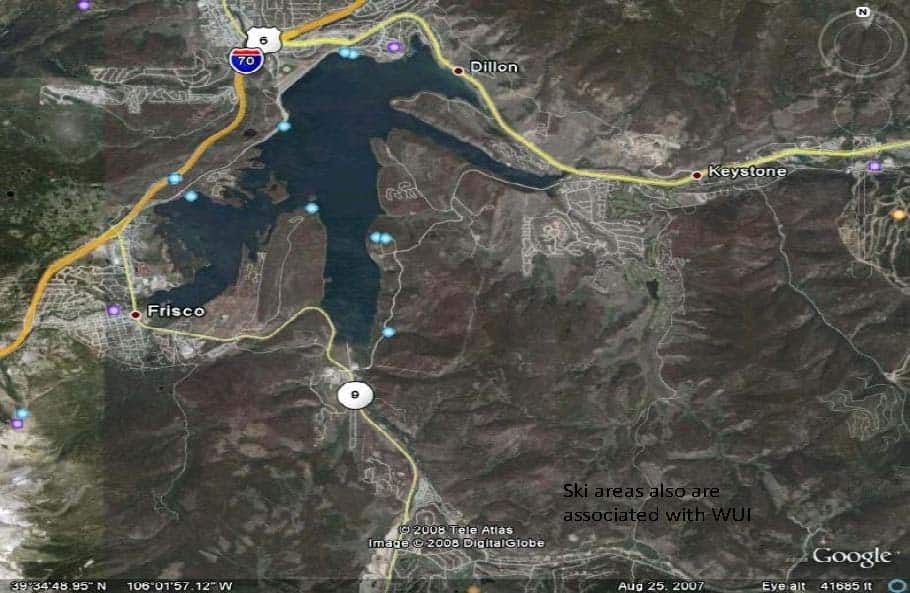Here are the relevant slides from a 2008 RACNAC (Roadless Area Conservation National Advisory Committee) meeting, comparing Idaho and Colorado. It might be interesting for the People’s Database to have the same figures for all western states. Note: you can click on this photo to get better resolution.

The “whitish area” just to the east of Frisco, is the city of Frisco’s Nordic center. The city salvage clearcut off the MPB killed timber it in 2006, and the Mayor said he had only one complaint. I gots photos. The “peninsula” just to the east of that, has since been clearcut. The long skinny east west subdivision just west of the I-70 chevron, had all the dead forest clearcut around it’s perimeter. You can barely see two campgrounds across the lake just east and west of the tip of the penninsula. They were both clearcut a few years ago. Campin in a clearcut. What’s interesting about the campgrounds, was it appeared some bright forester 25 years ago, did some small 1/8 acre group selection cuts throughout the campground. The regen in these group selections now soften the blow. Me thinks the foresters new the MPB would come and finish the job some day. To the south of the penninsula, you can see a scattering of salvage clearcuts from a MPB epidemic in the 80’s. Of course, they’re “green islands” surrounded by a sea of gray today. There is a project called “Ophir” that will clearcut the rest of the MPB around those green islands.
It would appear that the people of Frisco, Dillon, and Breck don’t buy into the MPB won’t burn “science.” The USFS wanted to “thin” the area to the south of the pennisula in the early 2000’s before the epidemic. Never happened. Got shot down by the green residents. A city council woman in Breck was quoted saying something along the line of ” The USFS will just rape it, we’ll take out chances with mother nature.” What a difference a MPB epidemic makes eh. Now the green residents act like they just invented forestry. But hey, I’ve changed my mind abut a lot of things in my life too.
“What’s interesting about the campgrounds, was it appeared some bright forester 25 years ago, did some small 1/8 acre group selection cuts throughout the campground.”
That work actually started even longer ago, in the late 70s. I ran the Dillon R.D. chainsaw crew in 1979 when, among other things, I ignominiously dropped a pine on a picnic table at one of the campgrounds. Tough table, too. The tree bounced off.
Yes, we knew the beetles were coming. We also knew there was no stopping them. But, we never considered the beetles to pose any additional fire risk. That area has a well-deserved reputation as an “asbestos” forest. Yes, it’ll burn, and when it does there will be no stopping it. But, this is ski country where the snowpack is deep, the elevation high, and the burning season short.
In 1979, I also had the pleasure of hiking into the Eagles Nest Wilderness to verify the natural cause of the first “let-burn” fire on the White River N.F. Tromping through the alpine forest at midnight, we found the lightning-struck snag. Had great hopes for it, too. But, the darn thing never did much of anything and when snow flew a month or so later, it was out, having burned a couple of acres.